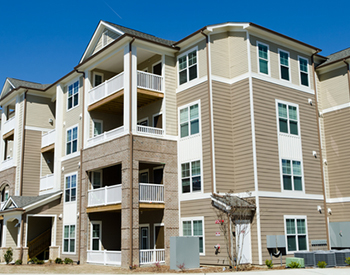
Why Your Home Should Be a Calming Place
Simply put, everyone needs a place where they can recharge. While many people enjoy engaging in hobbies outside of their work, some common hobbies like playing sports or going out with friends are not exactly the most relaxing activities that you can think of. Therefore, millions of Americans are working overtime at their jobs during the week, engaging in exciting, yet strenuous activities over the weekend, and then repeating. In this light, it’s almost no wonder that many people claim that they are tired all the time! Sleep is incredibly important, as proven by science. But along with the right amount of sleep, you should schedule into your day the right amount of mindful relaxation in your own home. If your home is not a purposefully relaxing haven for you to retreat to, there are definitive changes that you can make to where it is.Common Pitfalls of a Stressful Home Environment
It should be relatively easy to tell whether or not your home is causing you undue stress. Do you feel good when you are in the home, regardless of whether you are trying to read a book or clean the kitchen? If the answer is “no” or “sometimes,” there are likely changes that need to be made. Some traps that you can fall into at home include:- Not stopping to breathe.
- Worrying about what others will think of your home.
- Not inviting friends and family to visit.
- Relying on electronics too much when trying to relax.
- Not having a room (usually a bedroom) that is dedicated to relaxation.
What are some tips for creating a relaxing home?
Actually turning your current living situation into a more relaxing one is neither fast nor easy. It may require moving your belongings around, getting new ones or getting rid of old ones. Some tips for you to consider in making your home more relaxing are to:- Make changes to things that bother you. This could be as complex as changing a room from a guestroom to a yoga room, or as simple as changing your paint color from a nervous yellow to a calming blue. This does not have to happen all at once, either. Make a list of potential changes to make, and go down the list by starting with the easiest ones first. Eventually, your list will be just one or two weekend projects.
- Leave work at work. This can be one of the hardest changes to make. Try to slowly start doing more work during your normal work hours, and answer one fewer email every night at home. By forcing yourself to be more productive when you are being paid to be, you can then use home time to focus on relaxation and whatever makes you happy.
- Declutter your home, and get everything organized. There is certainly something to be said for the minimalist movement that has been going around during the last decade. Just looking at piles of clothes, paperwork or dishes can cause undue stress, because of the anticipation of needing to deal with them later. Put things away when you don’t need them, throw away or donate things that you don’t need/never use, and make lists of what you need to do at what time.
Bringing Your Relaxed Home Outside
Once you have taken the steps to foster a more relaxing atmosphere in your home, give it some time to settle in. As you go about your next few weeks with your new home changes in place, take stock of what feels right and what needs to be tweaked again. It is usually pretty rare to implement all of the perfect changes that you need on the first effort towards mindfulness. After you have made all of the decorative and mental changes that you need to where your home feels right, take some more time to get used to how it feels to relax in your home. This could take some time, but it will be amazing how much better you will begin to feel after just a few short weeks. Finally, when you have successfully found the strategies that work for you, try to replicate some of the practices that you have implemented into other aspects of your life. Of course, you will not want your work environment to be just as comfortable and relaxing as your home. This could cause you to not feel the difference between work and relaxation, which is bound to lower your productivity. However, having breaks to focus on the positives and maintain mindfulness during a workday can give you small bursts of energy that you will need. Lowering the overall amounts of stress that you feel in an average day can do wonders towards making you a happier, more fulfilled person. Related Article: Simple Home Makeover ProjectsBy Admin –



